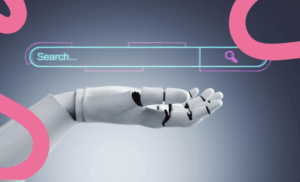In the midst of this unstoppable advance of artificial intelligence and new emerging technologies, automation and algorithms, one might think that the communication of the future will be increasingly technological. But what if it is not? I invite you to look in a different direction: don’t focus on the tools. Use them for what they are, take advantage of them without hesitation. But put your focus on the human and strategic aspects that you can bring to communication.
Why is technology insufficient?
While it is true that technology has broadened and improved communication in countless ways and contexts (automating responses, analysing data, translating languages, generating content at the click of a button…), there is a “dark side”. It involves saturation, mistrust, and a loss of emotional connection in the face of vast amounts of information that the public consumes like “fast food”.
That’s why I’m telling you: be careful — people are no longer looking for quantity of information, but for meaningful information. Hence the importance of communicating with purpose, empathy, and strategic vision.
Key reasons why communication will become more human and strategic.
- Attention is the new gold (and it’s limited).
The number of messages you put out doesn’t matter. Do you manage to capture your audience’s attention? That’s the real question. We exist in an increasingly noisy environment, so only the most authentic, empathetic, and meaningful messages will truly resonate with the receiver. What can you share that makes you come across as relatable? What have you experienced that might also have happened to the person next to you? Seek that connection with the person who will engage with your content.
- Build your audience’s trust through consistency, not automation.
As a user, you trust those who act with transparency and steady values that stand the test of time, don’t you? Show that consistency with your true self — let your content reflect what you genuinely think and believe in. Strategic communication understands and operates within a current context, but the message must be adapted and, above all, the long-term relationship must be nurtured.
- Remember that decisions are still driven more by emotions than by data.
We all know that neuromarketing and psychology have already shown that emotions guide a large part of our choices. The communication of the future, being more strategic, must be grounded in those emotions and go a step further — it must be about designing experiences. Simply sharing information is no longer enough. What else are you offering? You need to make it unforgettable, to help create lasting memories.
Technology remains an incredibly powerful tool that can help us scale, personalise, and measure. It can be your assistant — but there’s one thing you must remember: the more technological communication becomes, the more valuable the human element becomes — the part that can’t be replicated. Audiences are saturated and are seeking connection, not perfection. It’s becoming increasingly easy to spot AI-generated content, not because it’s wrong, but because it lacks “soul” and fails to stand out.
In a market where everyone has access to the same tools, the real difference is made by those who have something genuine to say — and know how to say it.










